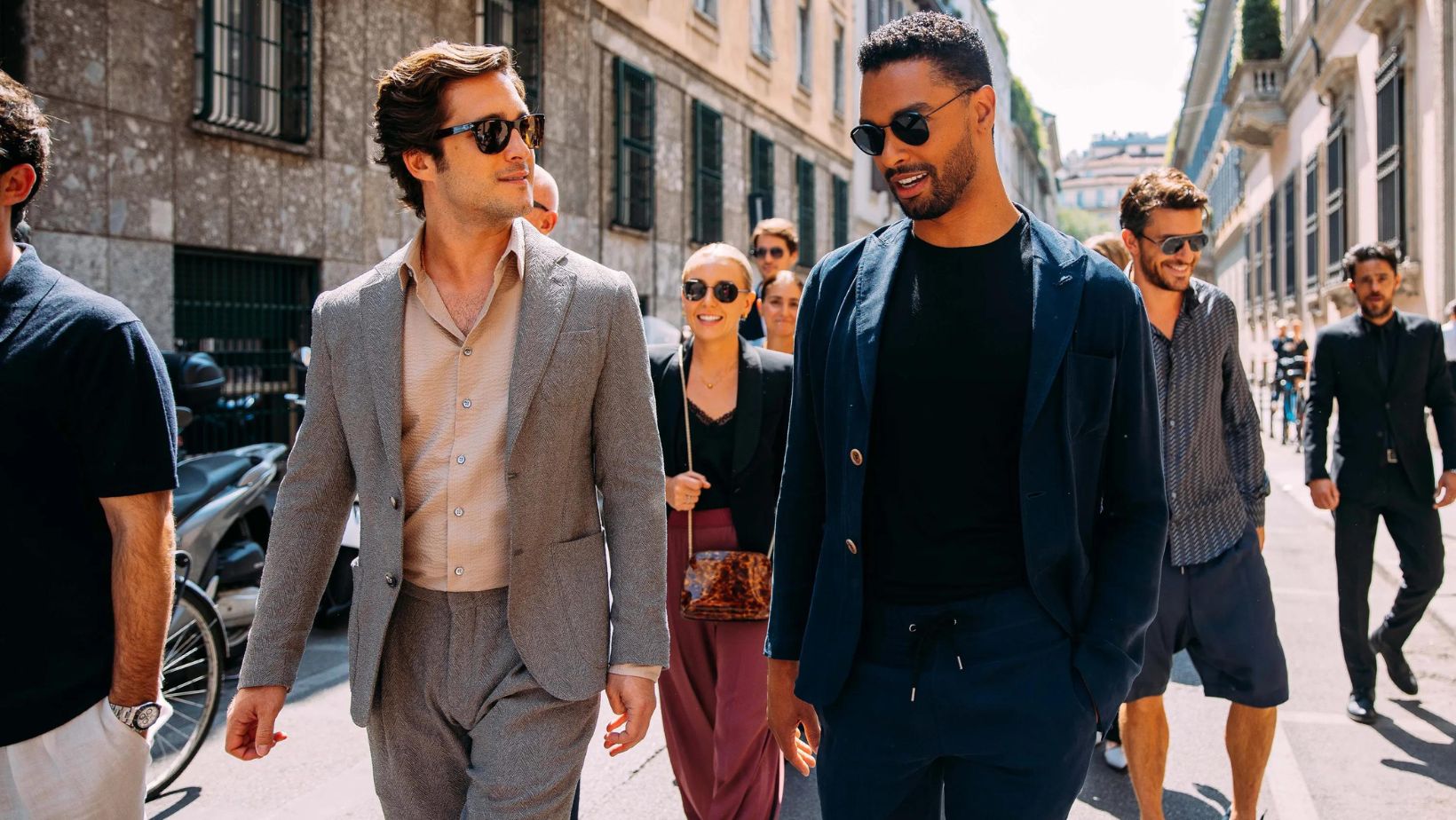Italian street style fashion is renowned for its effortless blend of sophistication and casual flair. From the bustling streets of Milan to the charming alleys of Rome, Italian fashionistas effortlessly exude a sense of style that is both chic and unique.
With a focus on quality craftsmanship and attention to detail, Italian street style embraces individuality and self-expression. It’s a vibrant tapestry of colors, textures, and patterns that reflect the rich cultural heritage of Italy.
Street Style Italian Fashion
Historical Overview
 Italian street style fashion has a rich history that dates back to the post-World War II era. During this time, Italian cities experienced a surge in creativity and self-expression, leading to the birth of a distinctive street fashion culture. Influenced by the country’s significant presence in the fashion industry, Italian street style became synonymous with sophistication and elegance, blending traditional tailoring techniques with a modern, urban twist.
Italian street style fashion has a rich history that dates back to the post-World War II era. During this time, Italian cities experienced a surge in creativity and self-expression, leading to the birth of a distinctive street fashion culture. Influenced by the country’s significant presence in the fashion industry, Italian street style became synonymous with sophistication and elegance, blending traditional tailoring techniques with a modern, urban twist.
Key Influencers and Designers
Several key influencers and designers have shaped the landscape of Italian street style fashion over the years. Icons such as Giorgio Armani, Miuccia Prada, and Valentino Garavani have played pivotal roles in defining and popularizing Italian fashion both domestically and internationally.
Characteristics of Street Style Italian Fashion
Key Elements and Trends
 Italian street style fashion is characterized by a fusion of sophistication and casual elegance, reflecting the effortless chicness that Italian fashion is renowned for. Key elements of street style Italian fashion include:
Italian street style fashion is characterized by a fusion of sophistication and casual elegance, reflecting the effortless chicness that Italian fashion is renowned for. Key elements of street style Italian fashion include:
- Mix of High and Low Fashion: Italian street style effortlessly combines high-end designer pieces with more affordable, everyday items, creating a versatile and accessible look.
- Attention to Detail: Italian street style emphasizes the importance of details, whether it’s a perfectly tailored jacket, statement accessories, or unique textures and patterns.
- Bold Use of Color: Vibrant and bold colors are a staple of Italian street style, adding energy and personality to outfits. Mixing and matching different hues is common in creating a striking look.
Recent trends in Italian street style include:
- Sustainable Fashion: Italian street style has embraced the global movement towards sustainability, with an increasing focus on eco-friendly materials and ethical production practices.
- Athleisure Influence: The fusion of sportswear elements with traditional Italian fashion has become a popular trend in street style, combining comfort and style effortlessly.
Comparison to Traditional Italian Fashion
Italian street style differs from traditional Italian fashion in several ways:
- Casual vs. Formal: Street style Italian fashion leans towards a more casual and relaxed aesthetic, in contrast to the formal and tailored approach of traditional Italian fashion.
- Youthful Energy: Street style Italian fashion often exudes a youthful and dynamic energy, incorporating streetwear influences and a more contemporary vibe compared to the timeless elegance of traditional Italian fashion.
- Diverse Influences: While traditional Italian fashion draws inspiration from classic and timeless designs, street style Italian fashion embraces a diverse range of influences, including urban streetwear, pop culture, and global trends.
Street Style Italian Fashion Around the World
Popularization Beyond Italy
 Street style Italian fashion has transcended its borders and gained immense popularity around the world. Its unique blend of sophistication and casual ease has captured the attention of fashion enthusiasts globally. Influenced by iconic designers such as Giorgio Armani and Miuccia Prada, Italian street style has become synonymous with a distinctive fusion of high-end luxury and accessible comfort.
Street style Italian fashion has transcended its borders and gained immense popularity around the world. Its unique blend of sophistication and casual ease has captured the attention of fashion enthusiasts globally. Influenced by iconic designers such as Giorgio Armani and Miuccia Prada, Italian street style has become synonymous with a distinctive fusion of high-end luxury and accessible comfort.
In fashion capitals like New York, Paris, Tokyo, and London, Italian street style has made a significant impact on the local fashion scenes. The bold use of color, attention to detail, and innovative layering techniques embraced in Italian street fashion have inspired fashionistas worldwide to experiment with their looks and embrace individuality.
Cultural Adaptations
As Italian street style continues to expand its reach across continents, it undergoes various cultural adaptations that reflect the unique sensibilities of different regions. In cities like Seoul, South Korea, and São Paulo, Brazil, Italian street fashion combines with local trends to create distinctive sartorial expressions that blend global influences with indigenous styles.
The adaptability of Italian street style allows it to evolve seamlessly within diverse cultural contexts, incorporating elements of traditional attire and contemporary fashion trends.



